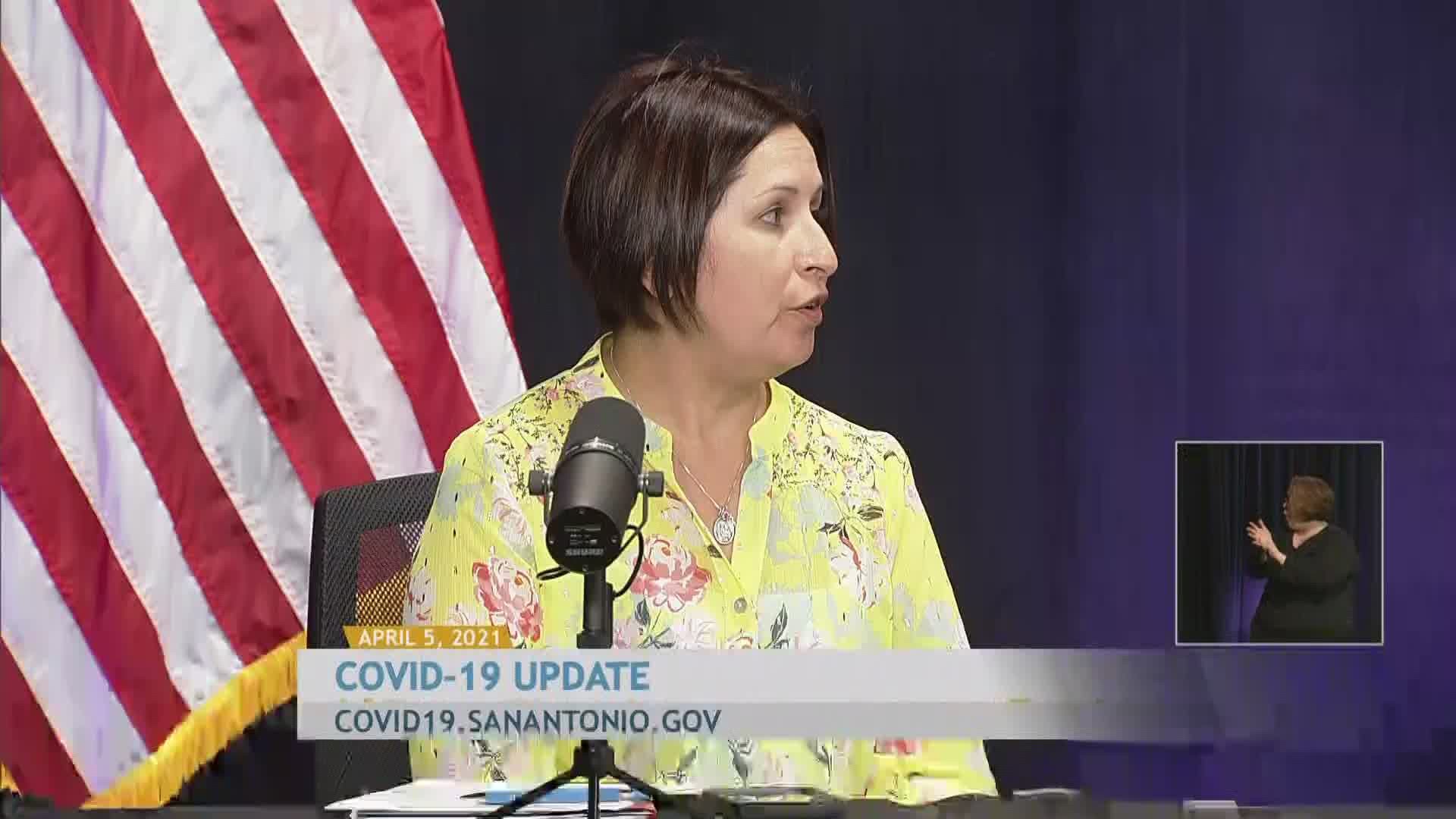SAN ANTONIO — We're tracking the latest numbers from the coronavirus pandemic as well as the vaccine efforts in San Antonio and across Texas.
Latest Coronavirus Numbers
Here are the latest numbers reported by Bexar County and state officials:
Bexar County (data as of Wednesday, April 7):
- 290 new cases were reported, bringing the total number of cases to 208,462.
- 8 new deaths were reported as the county's death toll rose to 3,220.
- 195 patients currently hospitalized; 28 patients are on ventilators and 84 are in intensive care.
Metro Health reports new data at 4 p.m. Monday through Friday.
Texas (data as of Wednesday, April 7):
- 5,771 cases reported, including 3,365 new confirmed, 802 new probable, and 1,604 backlogged cases. More than 2.800 million Texans have been diagnosed with COVID-19 since the pandemic began
- 99 additional deaths were reported, raising the statewide death toll from virus complications to 47,921.
- 2,886 Texans were hospitalized Tuesday, which is up four from the previous day.
More county case information is available through the Texas Department of Health Services COVID-19 dashboard.
Vaccine Progress in Bexar County
Across Bexar County, more than 831,000 vaccine doses have been administered, as of April 4.
- 524,748 Bexar County residents have received at least one dose of the coronavirus vaccine, representing 33.8% of the county's population eligible to receive a vaccination.
- 318,527 Bexar County residents are fully vaccinated, representing 20.5% of the county's population eligible to receive a vaccination.
- 206,221 Bexar County residents (13.3%) have not yet received their second vaccine dose.


DSHS defines "population" as residents who are 16 years of age or older; in Bexar County, this represents more than 1.55 million people. The CDC states that "when a high percentage of the community is immune to a disease (through vaccination and/or prior illness)," that community will have reached herd immunity, "making the spread of this disease from person to person unlikely."
80,190 vaccines were administered last week in Bexar County; a total of 831,547 vaccine doses have been administered in the county since vaccination efforts began 15 weeks ago.

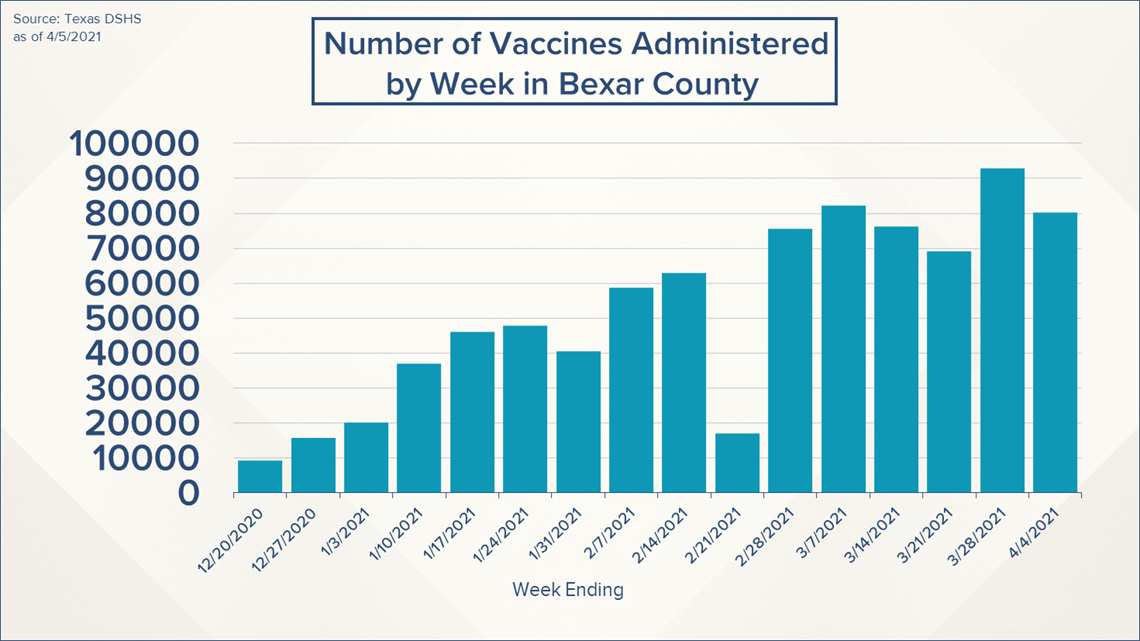
Across Texas, 4.668 million residents are fully vaccinated. In total, the state has administered 12.529 million vaccine doses, as of April 5. Texas is one of eight states with less than 17% of its population fully vaccinated, as of April 4:

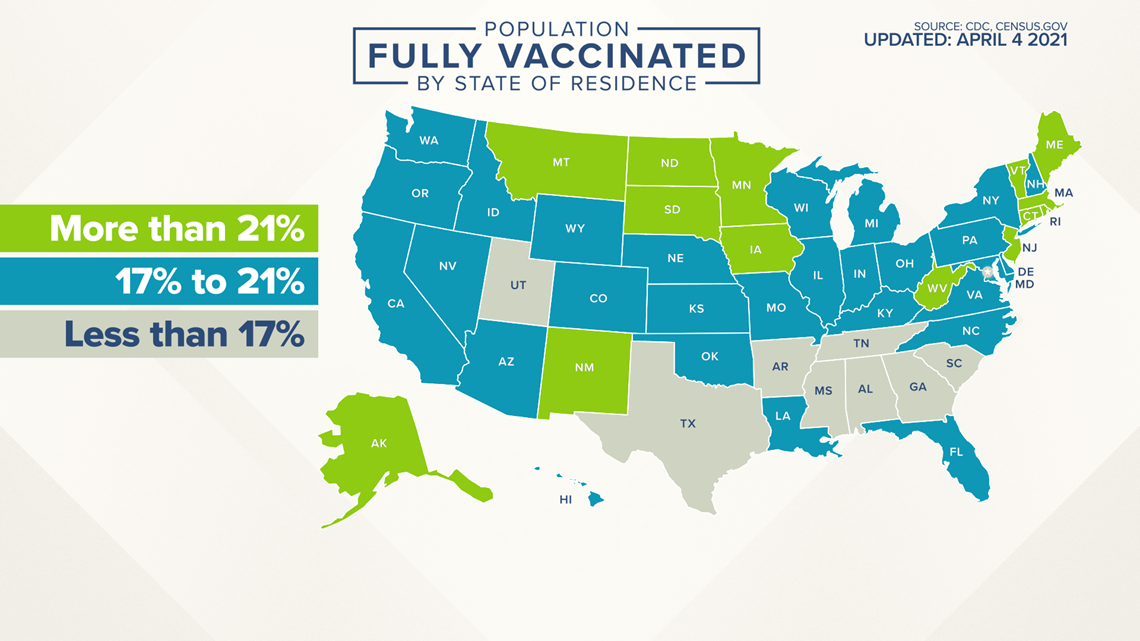
18.8 percent of the country's population has been fully vaccinated as of April 4, according to the Centers for Disease Control.
Bexar County COVID-19 Trends
This week's update of the Warning Signs and Progress Indicators for Bexar County saw Bexar County holding steady at the low-risk level. The positivity rate remains at 2.1% for a second straight week, well below the 5% threshold set by local officials.
The county's seven-day moving average decreased slightly, from 188 at the end of last week to 167 on Monday.

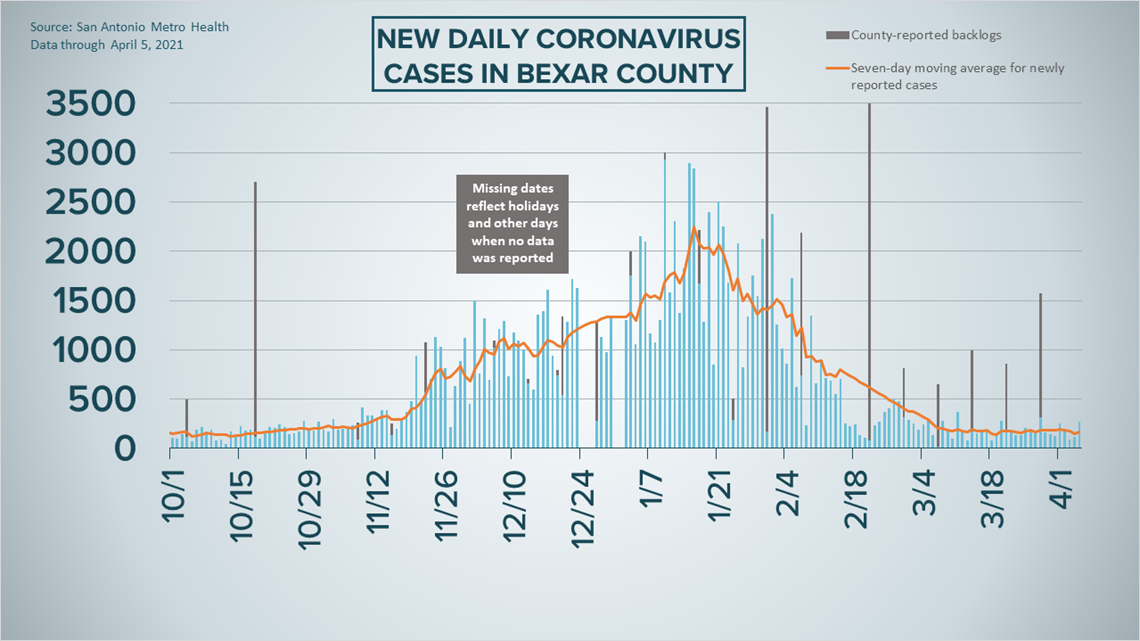
The number of COVID-19 patients receiving treatments at area hospitals dropped by seven in the last 24 hours, to 179. Of those, 72 patients are in intensive care, and 30 are on ventilators.

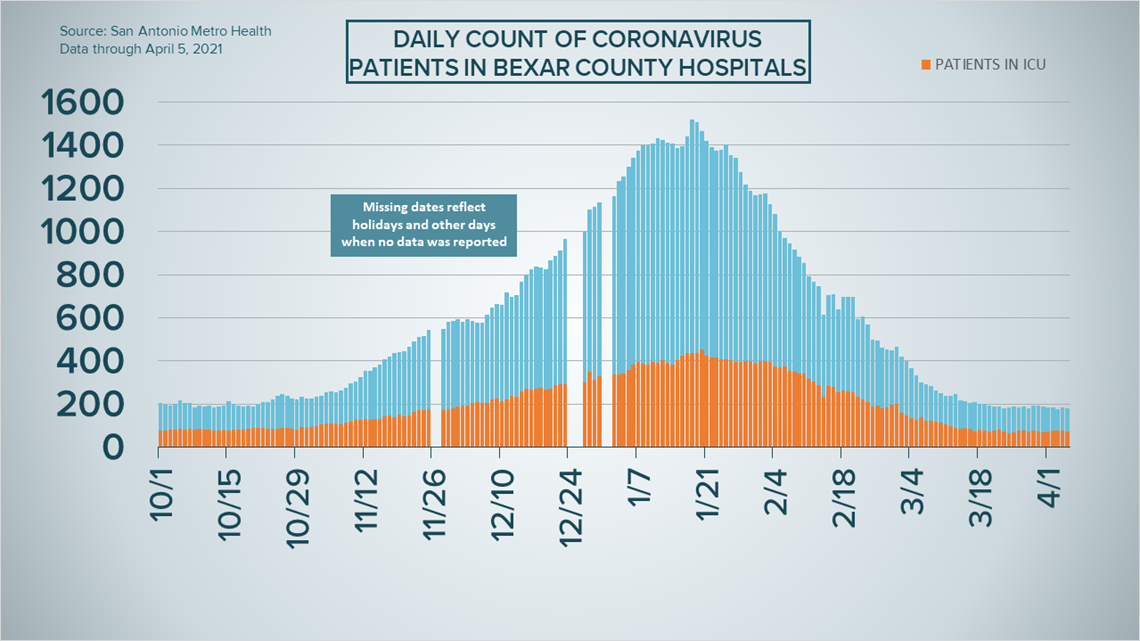
Latest Coronavirus Headlines
Coronavirus symptoms
The symptoms of coronavirus can be similar to the flu or a bad cold. Symptoms include fever or chills, cough, shortness of breath or difficulty breathing, fatigue, muscle or body aches, headache, new loss of taste or smell sore throat, congestion or runny nose, nausea or vomiting, and diarrhea, according to the Centers for Disease Control.
Most healthy people will have mild symptoms. A study of more than 72,000 patients by the Centers for Disease Control in China showed 80 percent of the cases there were mild.
But infections can cause pneumonia, severe acute respiratory syndrome, kidney failure, and even death, according to the World Health Organization. Older people with underlying health conditions are most at risk.
Experts determined there was consistent evidence these conditions increase a person's risk, regardless of age:
- Chronic kidney disease
- COPD (chronic obstructive pulmonary disease)
- Obesity (BMI of 30 or higher)
- Immunocompromised state (weakened immune system) from solid organ transplant
- Serious heart conditions, such as heart failure, coronary artery disease, or cardiomyopathies
- Sickle cell disease
- Type 2 diabetes
- The CDC believes symptoms may appear anywhere from two to 14 days after being exposed.
Human coronaviruses are usually spread...
- Between people who are in close contact with one another (within about 6 feet).
- Through respiratory droplets produced when an infected person coughs, sneezes or talks. These droplets can land in the mouths or noses of people who are nearby or possibly be inhaled into the lungs.
- Some recent studies have suggested that COVID-19 may be spread by people who are not showing symptoms.
Help stop the spread of coronavirus
- Stay home when you are sick.
- Eat and sleep separately from your family members
- Use different utensils and dishes
- Cover your cough or sneeze with your arm, not your hand.
- If you use a tissue, throw it in the trash.
Find a Testing Location
City officials recommend getting a COVID-19 test if you experience fever or chills, cough, shortness of breath or difficulty breathing, fatigue, muscle or body aches, headache, new loss of taste or smell, sore throat, congestion or runny nose, nausea or vomiting, or diarrhea.
Here's a Testing Sites Locator to help you find the testing location closest to you in San Antonio.

